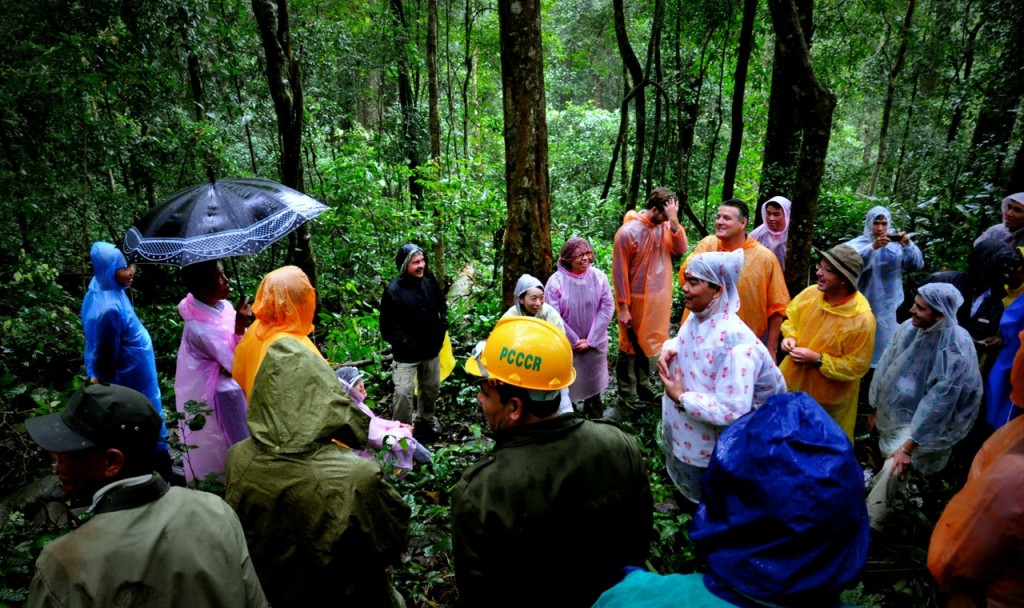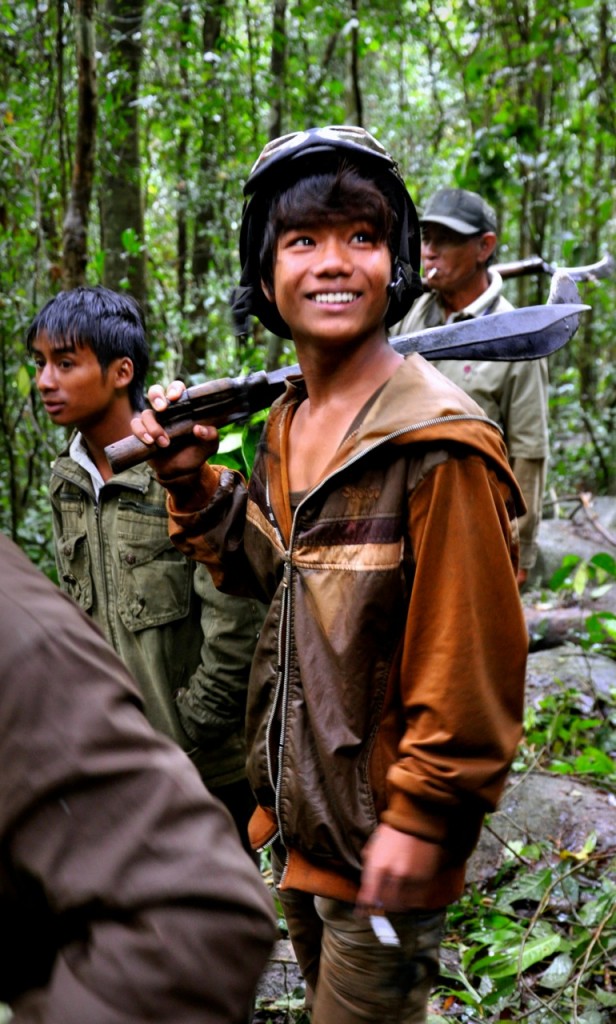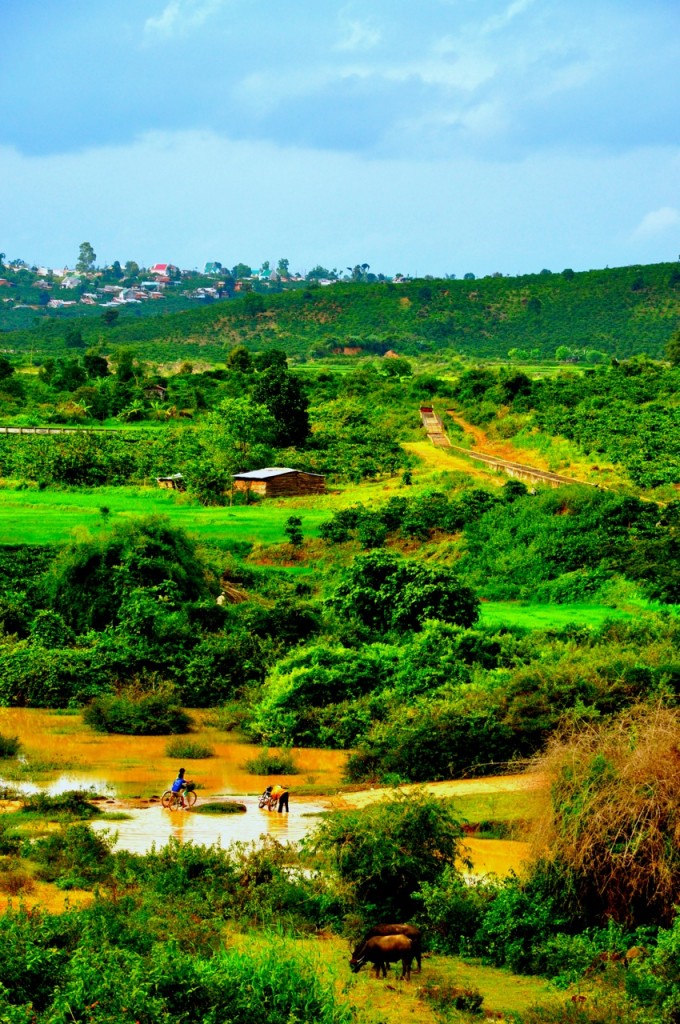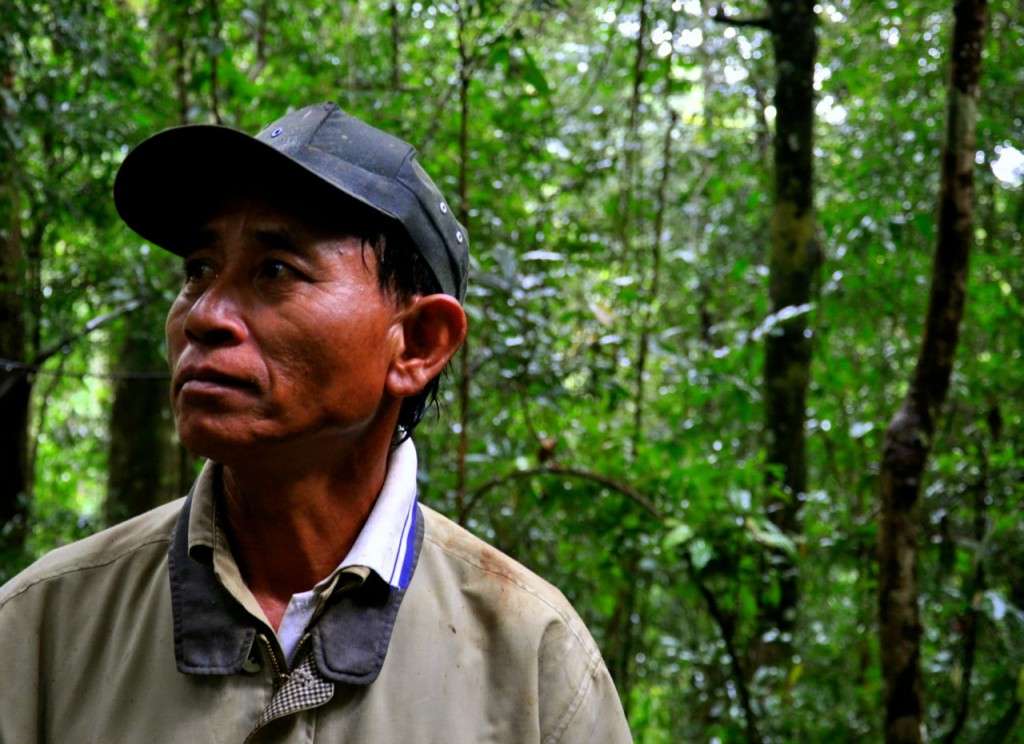Hiking into a wet forest in the Lam Dong Province of Vietnam, I was struck by the similarities with the Ecuadorian Amazon – giant leaves glistening from the rain, tangled vines creeping along moss covered tree trunks, sunlight filtering through the canopy to fill the forest with a light glow. In the Amazon, the verdant forest was often interrupted by ugly rusting machinery, a factor of my research on how oil extraction impacts indigenous peoples. In Vietnam, the monotonous green of the forest was brightened by people from around the world wearing neon yellow, orange and pink plastic ponchos. They too were the reason I was in Vietnam. Instead of researching natural resource exploitation, we were all visiting to learn about Vietnam’s benefit sharing aspect of their Reducing Emissions from Deforestation and Degradation (REDD+) program.

REDD+ was first established as a way to combat emissions from tropical deforestation, which according to the IPCC Fifth Assessment Report, The Physical Science Basis, represented a majority of the ten percent of all human land-use change emissions. When REDD+ initially launched in 2005, it was seen as the future of forest related emissions mitigation. But REDD+ has quickly become a highly contentious issue. Advocates argue that REDD+ is a win-win, providing benefits to the developed world in the form of carbon credits and supporting the developing world through international technical support and finance. Critics question whether REDD+ will actually reduce emissions, doubt the financial sustainability and warn against negative social impacts.

Vietnam is attempting to deal with potential negative social impacts by developing benefit sharing mechanisms for REDD+. Benefit sharing is exactly what it sounds like, an attempt to equally distribute the monetary and non-monetary benefits of REDD+. How to go about doing so is more complicated.
Eighteen international participants and I traveled from 17 countries to Lam Dong province, Vietnam in order to participate in The Forests Dialogue’s field meeting on REDD+ Benefit Sharing. We gathered with 33 Vietnamese nationals from forest communities, local government, private companies and non-governmental organizations to learn from and share knowledge about their benefit sharing ideas. For many of them REDD+ is a personal issue, impacting the forests in which they work. For others, the meeting provided an opportunity to gather information that would later be translated into policy at their own institutions or governments. I traveled to Vietnam as part of my work at The Forests Dialogue. The Forests Dialogue’s mission is to “build relationships and to spur collaborative action on the highest priority issues facing the world’s forests” through multi-stakeholder dialogue. One of their current priority issues is REDD+ Benefit Sharing which grew out of past initiatives on REDD Readiness and REDD Finance.
Standing in his brilliant yellow poncho in the dripping forest, Iwan Wibisono, from the REDD+ National Task Force in Indonesia, asked local forest guards, “What is your role?” After the question is translated to the Hang Lang villagers, a man dressed in a tan jacket and sensible cap responded that their main purpose is to monitor and protect the forest from illegal logging. Occasionally the government-owned logging company will ask them to help with forest management, including cutting selected trees. Locals participating in forest monitoring are a part of Lam Dong province’s payments for ecosystem services (PFES) program. The villagers receive payment in return for protecting the forest and the services it provides. The goal for REDD+ benefit sharing is to increase the payments to locals for their efforts in protecting the forest from deforestation and degradation. PFES has set a precedent for this type of payment, ideally easing the transition for REDD+ payments. In reality, locals are frustrated by the slow pace of REDD+. International negotiations and financing understandably take much more time than local PFES programs.

On the second day of the meeting, participants sat amongst Ka La Tongu community members in a recently drenched open field with still pools of water reflecting puffy white clouds. Curious children from the nearby homes tentatively approached the group, quickly retreating once they were given packages of cookies and crackers.
Daryl Bosu from A Rocha Ghana raised his hand to ask, “If because of low performance, you don’t receive payments, how do you deal with this situation?”
The responses made it unclear whether community members made the connection between the payments they received and their performance under PFES. This has significant implications for REDD+. If communities are unaware that their forest protection activities are linked with payments, the protection of the forest is at risk. Furthermore, even if communities make the connection between payments and forest protection, top-down approaches may fail to create a community ownership of the forest. If the payments are insufficient and a sense of community ownership is lacking, they then have less incentive to focus protecting the forest and more for exploring potential economic activities such as cacao expansion.
On the fourth day of the dialogue, four diverse groups of participants attempted to answer the question: What actions will you take to move REDD+ Benefit Sharing forward? Participants were full of ideas. For Vietnam, they discussed opportunities for strengthening community forest management through capacity building, establishing supportive policies and creating longer forestry contracts and social safeguards. At regional and national levels, policy makers can focus on understanding incentive approaches beyond PFES, strengthening cross-sectoral collaboration and institutionalizing recourse and grievance procedures. Participants also felt like they had learned universal strategies. They established that any country attempting to create a benefit sharing mechanism for REDD+ should have high amounts of transparency, leverage non-cash benefits like land rights and recognize the challenges and benefits of national versus project level approaches.

On the final day of the dialogue, we parted with hugs and promises to keep in touch, a very different feel from the handshakes shared only days before. We had bonded over four days of learning and intense discussions about REDD+ benefit sharing in Vietnam. Many people will be able to directly apply what they learned in Vietnam in their own REDD+ country preparations. Others will be able to bring their newfound knowledge to organizations interested in REDD+ projects, finances, and policy.
Undeniably, our time spent in Vietnam created a network of individuals with a better idea of how to implement benefit sharing. The Forests Dialogue will continue the learning and information gathering process with REDD+ Benefit Sharing dialogues in Ghana, Peru and Mexico. With these dialogues and other stakeholder learning processes, hopefully REDD+ can become a more feasible and socially beneficial climate mitigation activity with local benefits and international impacts.
Edited by David Gonzalez